Usually when I watch a video installation, I wait until it ends so I can start from the beginning. Hambleton erases such possibility. By combining his videos with a computer software, he devises digital beings that create their own narrative, conclusion, and duration. He leaves it to chance of the software that eventually the constantly changing set of video and audio will create a perfect one.
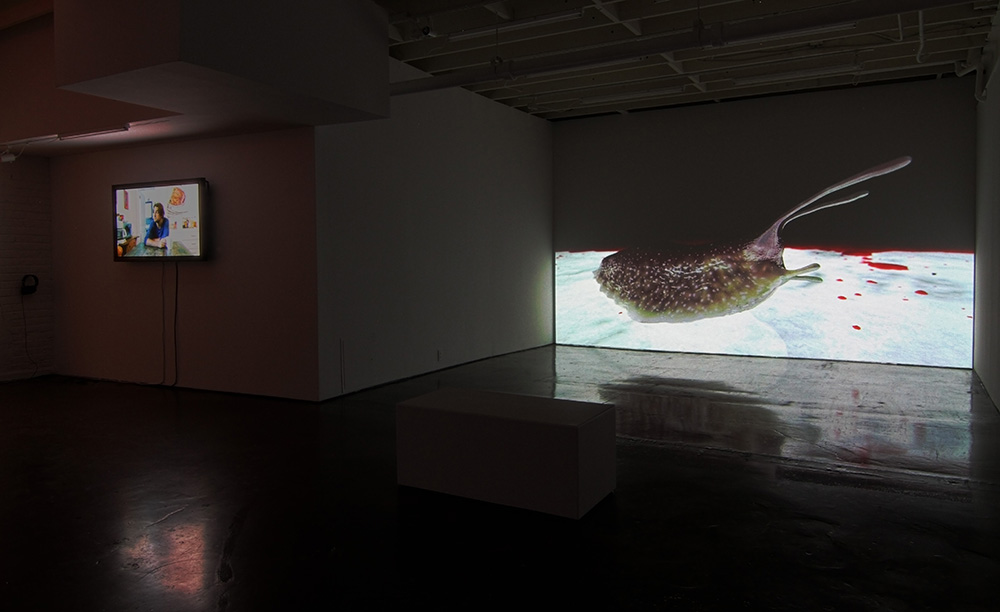 Joe Hambleton, 2015, Behind the Fourth Wall ver. 2, installation view at Pari Nadimi Gallery
Joe Hambleton, 2015, Behind the Fourth Wall ver. 2, installation view at Pari Nadimi Gallery
No one explains this process better than himself: “Waiting for Reset is an experimental narrative that utilizes repetition and chance to represent key elements in a character’s life. The video work runs through scripted software. After each repetition, the software gives the character a chance to break his routine. If he does, the video simply ends, if he does not, another repetition will occur with the tempo increased. With each repetition the odds of the character succeeding vary. At first his chances increase, but after a certain amount of repetitions they begin to decrease. If the character does not break his routine after a certain amount of repetitions, the odds of him doing so will be almost non-existent, potentially locking him into his routine endlessly.”
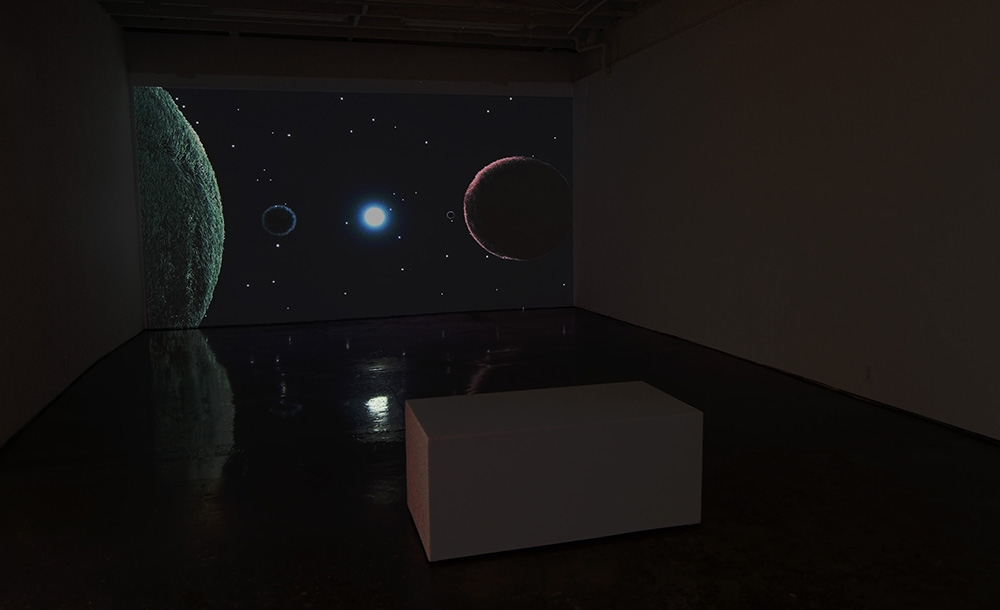 Joe Hambleton, 2015, Behind the Fourth Wall ver. 2, installation view at Pari Nadimi Gallery
Joe Hambleton, 2015, Behind the Fourth Wall ver. 2, installation view at Pari Nadimi Gallery
“Waiting for Reset” shows a male character doing a series of mundane everyday activities. Making coffee, eating breakfast, having a beer, smoking, waking up, brushing teeth, and the list goes on. Then the sequence concludes by the character sitting on his couch while his phone rings from an unknown number. He sighs, and ignores the call. The screen goes blank and the sequence of activities begins again, but they are slightly different, and shorter. The phone rings again, and he ignores it again with a sigh. This is repeated with faster and shorter sequences until finally this suffocating anticipation is relieved with him picking up the phone. It is a half-relief, however, because the screen goes dark as he opens his mouth to speak. Expecting the same film to play, I watch without anticipation, but the relief does not come, and I start to second-guess my memory. The sequence continues to repeat faster and shorter but he never manages the pick up the phone, until out of anxiety I stop watching. Hambleton radically rejects normalized narrative techniques and creates a story that transforms. It’s impossible to tell whether the same story will ever happen twice. The fact that it is up to the story (or the character) to continue its own narrative is highly intriguing because the arbitrary sequencing program is totally unsympathetic to the viewer’s uneasiness.
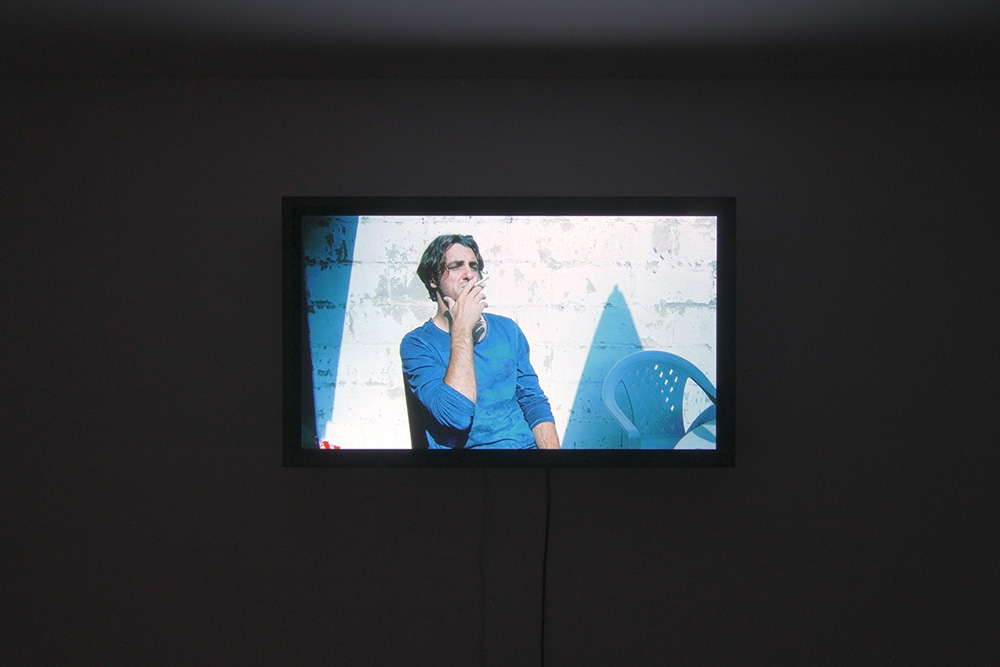 Joe Hambleton, 2015, Waiting for Reset 2, installation view at Pari Nadimi Gallery
Joe Hambleton, 2015, Waiting for Reset 2, installation view at Pari Nadimi Gallery
Behind the Fourth Wall ver. 2 adopts a similar program, but perhaps more complex. There is a certain set of video clips, and a certain set of audio clips. These are paired arbitrarily. Every new sequence is a brand new pairing. Effectively, this means that countless different meanings are produced with each pairing. Some of the repeated video clips are of a simple RPG with a game character walking through maps, a snail (digitally rendered) flooded with blood, fuzzy planets shifting around each other, and an abstract three-dimensional space. Some of the audio clips include ‘He went through a sacred period in his life’, ‘you always got me so much joy’, ‘sometimes I still need you’, ‘I’ve made little progress’. While the video clips are seemingly random, the audio clips resemble short journal entries, filled with self-reflections, regret, reminiscence, and observations.
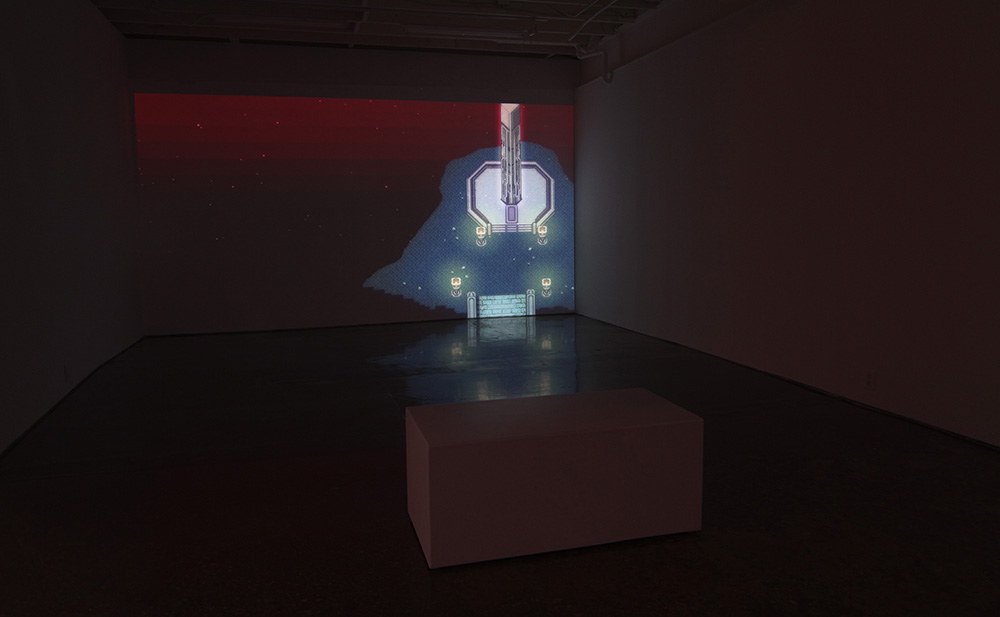 Joe Hambleton, 2015, Behind the Fourth Wall ver. 2, installation view at Pari Nadimi Gallery
Joe Hambleton, 2015, Behind the Fourth Wall ver. 2, installation view at Pari Nadimi Gallery
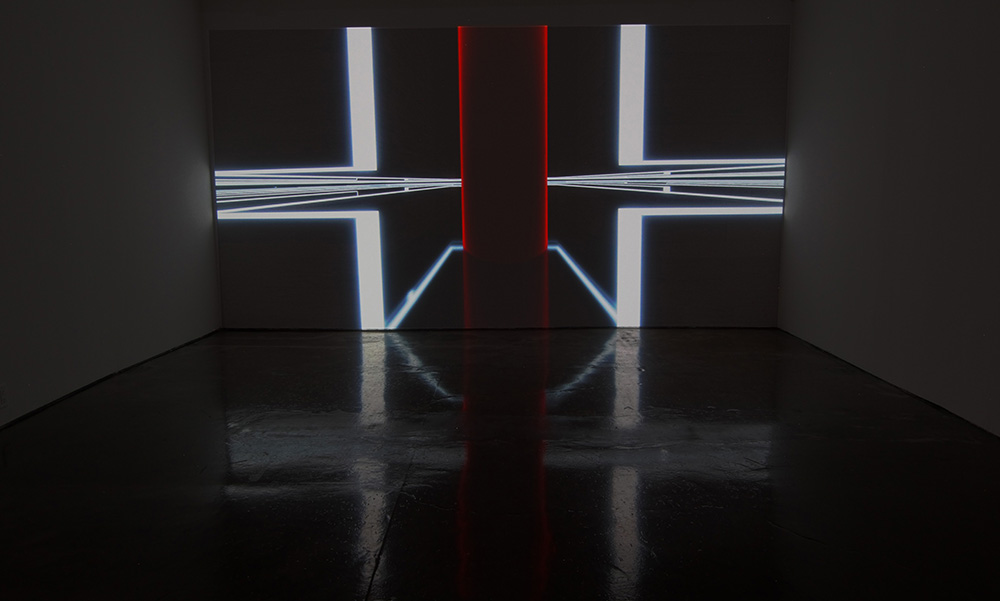 Joe Hambleton, 2015, Behind the Fourth Wall ver. 2, installation view at Pari Nadimi Gallery
Joe Hambleton, 2015, Behind the Fourth Wall ver. 2, installation view at Pari Nadimi Gallery
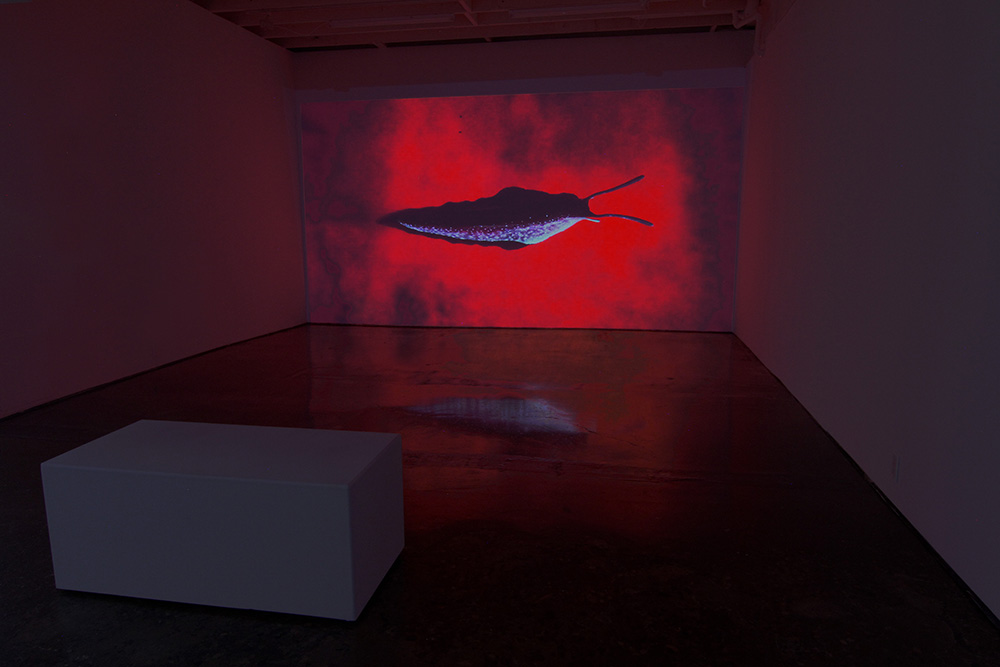 Joe Hambleton, 2015, Behind the Fourth Wall ver. 2, installation view at Pari Nadimi Gallery
Joe Hambleton, 2015, Behind the Fourth Wall ver. 2, installation view at Pari Nadimi Gallery
In both video installations, Hambleton leaves the software responsible for the production of meaning. Through this process, concept of statistics and symbolization of Hambleton’s personal life comes together beautifully in Behind the Fourth Wall.
Sunny Kim
Images are courtesy 0f Pari Nadimi Gallery, photo by the artist.
*Exhibition information: November 12 – December 24, 2015, Pari Nadimi Gallery, 254 Niagara Street, Toronto. Gallery hours: Wed – Sat, 12 – 5 p.m.
